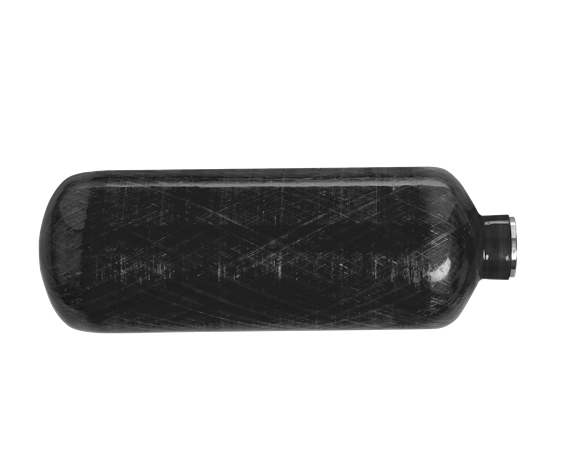Cevotec system saves time, material in hydrogen storage vessel production
The company’s SAMBA-series fiber patch placement technology applies carbon fiber patches to the dome area to produce storage vessels for fuel cell electric vehicles.

Source | Cevotec
Cevotec (Munich, Germany) presents its fiber patch placement system as a solution for saving material, cost and 20% time in the manufacture of composites-based high-pressure hydrogen storage vessels for fuel cell electric vehicles (FCEV).
According to Cevotec, hydrogen-powered FCEVs feature fast fueling and longer range compared to battery-powered cars, while retaining the performance benefits of the electric powertrain. However, among the challenges to this technology include the high fiber count needed to build hydrogen storage vessels, Cevotec says, along with the desire to use less expensive fibers. Cevotec’s solution is its SAMBA series production systems, which won a JEC Innovation Award in 2018.
“Wrapping endless fibers around the liner is best for the cylindrical part,” says Dr. Neven Majic, executive VP of Cevotec. “But filament winding at the domes means redundant material on the cylindrical part — which translates into excess weight and cost of the final product.”
Cevotec’s solution is to apply carbon fiber patches in the dome areas, using the same material, just in patch form. “The patches are designed to exactly cover the areas causing problems in filament winding,” explains Majic. With patch reinforcements on the liner domes in a first step, the patched liners are passed over to the filament winding process, which then reportedly needs less material and production time for the dome areas.
Patching of the domes is done by Cevotec’s SAMBA Series production systems. “The Fiber Patch Placement [FPP] technology cuts patches from fiber material and places them individually on positions calculated by CAE software ARTIST STUDIO,” says Majic. One FPP system is said to reinforce vessels for several winding machines, and Cevotec says that manufacturers can realize at least 20% material and cycle time savings.
Applications areas for FPP also include many components in aerospace and new urban air mobility, all of which are currently produced manually. The company has also conceptualized a range of production cell configurations to match the manufacturing process to the different applications.
“The automotive industry has invested billions in fuel cell electric vehicles, but only very few cars are on our streets yet. One of the larger challenges is to efficiently and safely store hydrogen in the vehicle,” says Thorsten Groene, CEO Cevotec. “There is working pressure of up to 700 bar in the tanks, which translate into approximately 10 kilograms of carbon fiber for 1 kilogram of hydrogen storage — a very high ratio.”
Related Content
-
Jeep all-composite roof receivers achieve steel performance at low mass
Ultrashort carbon fiber/PPA replaces steel on rooftop brackets to hold Jeep soft tops, hardtops.
-
Plant tour: Albany Engineered Composites, Rochester, N.H., U.S.
Efficient, high-quality, well-controlled composites manufacturing at volume is the mantra for this 3D weaving specialist.
-
Plant tour: Teijin Carbon America Inc., Greenwood, S.C., U.S.
In 2018, Teijin broke ground on a facility that is reportedly the largest capacity carbon fiber line currently in existence. The line has been fully functional for nearly two years and has plenty of room for expansion.

.jpg;width=70;height=70;mode=crop)













